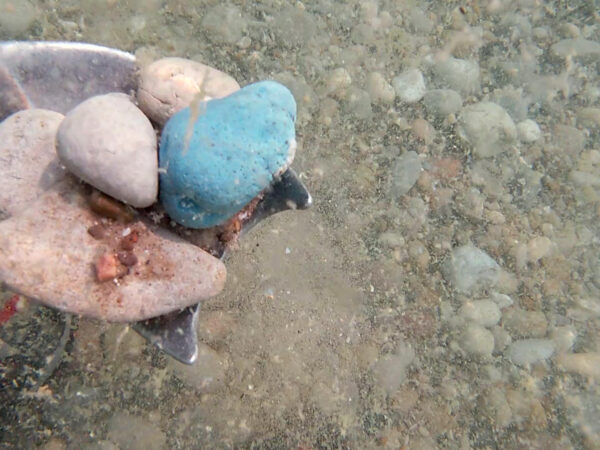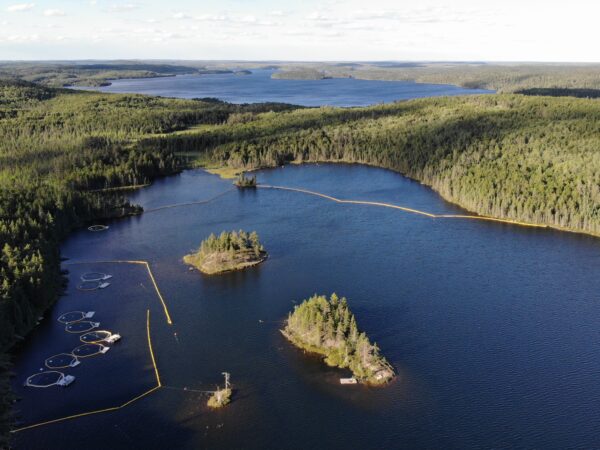
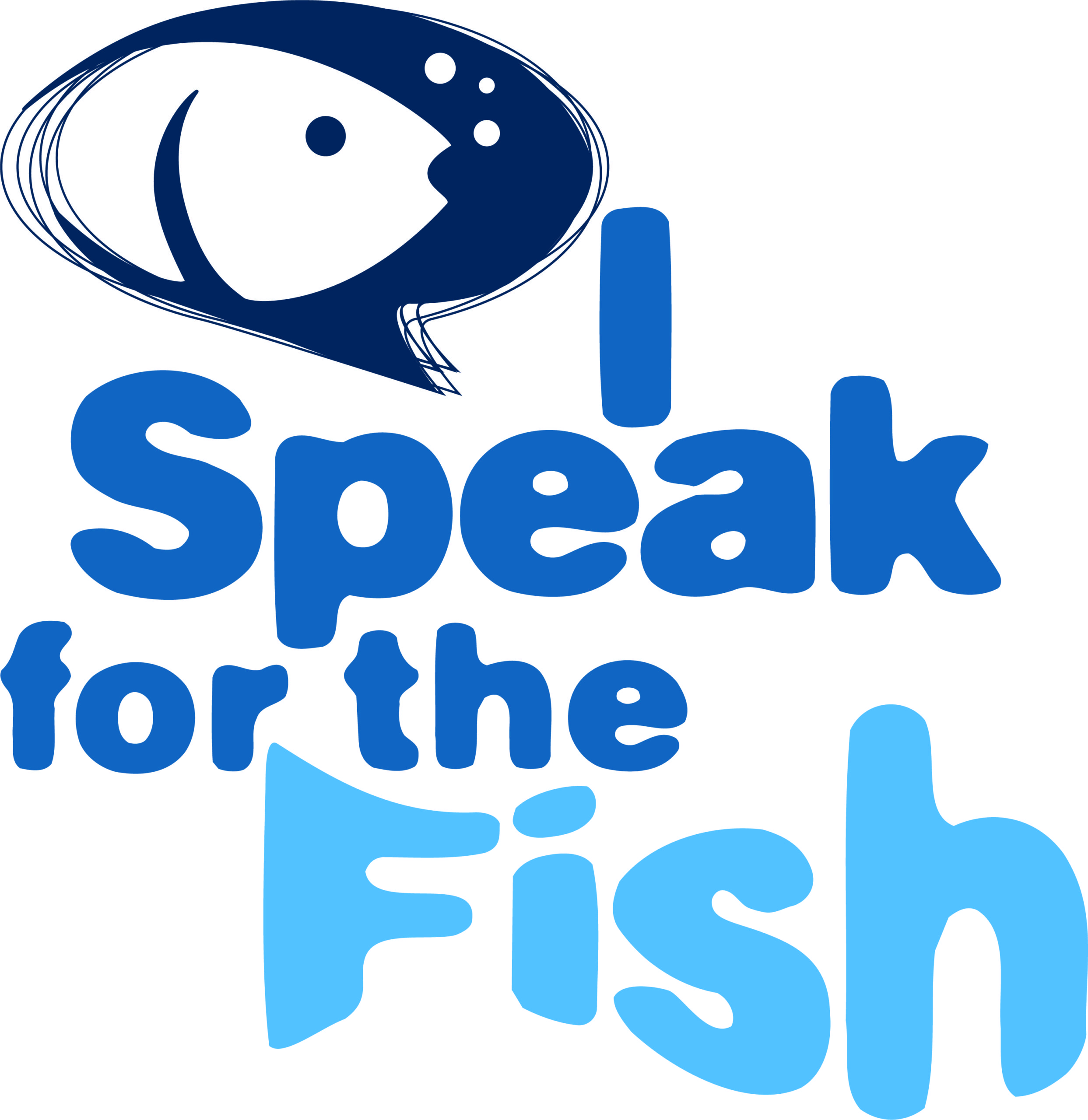 I Speak for the Fish is a new monthly column written by Great Lakes Now Contributor Kathy Johnson, coming out the third Monday of each month. Publishing the author’s views and assertions does not represent endorsement by Great Lakes Now or Detroit Public Television. Check out her previous columns.
I Speak for the Fish is a new monthly column written by Great Lakes Now Contributor Kathy Johnson, coming out the third Monday of each month. Publishing the author’s views and assertions does not represent endorsement by Great Lakes Now or Detroit Public Television. Check out her previous columns.
I was recently reminded of the summer I spent working a gold dredge on a remote creek in Michigan’s thumb. For eight hours each day, I knelt in waist-deep water sorting a steady flow of material moving along a two-foot-wide conveyor belt.
I was looking for treasure but not of the golden variety – our team was after an endangered freshwater mussel.
Hour after hour, I sorted through what the conveyor belt delivered, setting aside every mussel I found, including dead shells.
There were times when I fell behind and got completely overwhelmed like in the infamous I Love Lucy scene in the chocolate factory. But even when the sorting became frantic, I still preferred it to running the dredge-head.
Extending from the front of the dredge was a 20-foot hose larger in diameter than my thigh. It was cumbersome and fatiguing for me to maneuver. It took everything I had to wrangle it around.
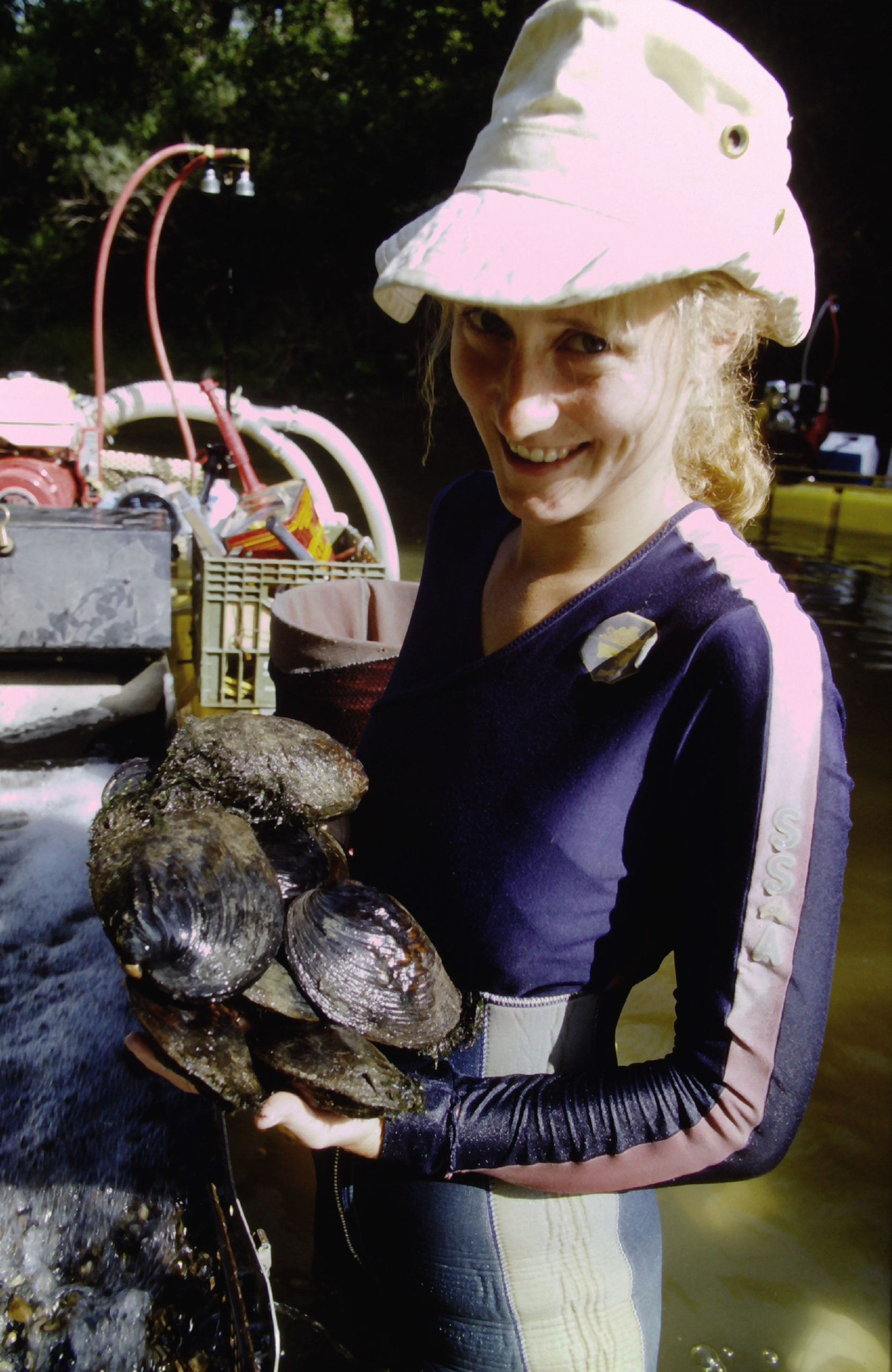
Kathy Johnson holding mussels (Photo Credit: Greg Lashbrook/PolkaDot Perch)
The dredge worked like a giant vacuum cleaner on high-grade steroids, scouring and devouring everything in front of it. Sand, dirt, rocks, sticks, garbage, diver’s gloves, everything was sucked up the hose and dropped onto the conveyor belt.
When the dredge-head reached the impenetrable floor of the streambed, we had to break the suction and wrestle it to a new spot before releasing it again. My partner Greg Lashbrook proved to be far more suited to this job than I.
By mid-summer, the swarms of mosquitoes were so thick we had to drape ourselves with netting to keep them from bleeding us dry. Kneeling in the tepid river offered no relief from weeks of Michigan’s steamier-than-hell humidity.
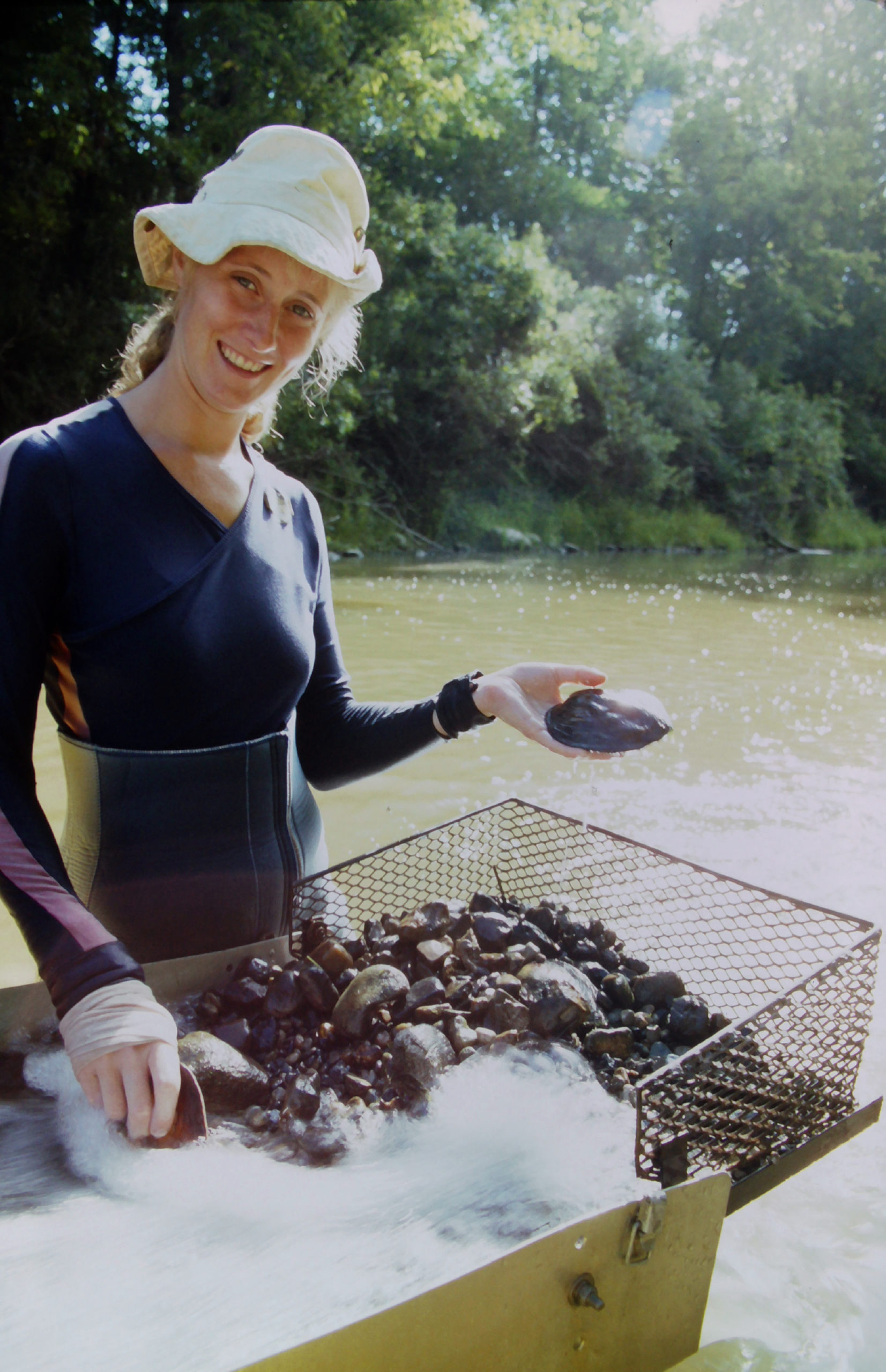
Kathy Johnson sorting mussels (Photo Credit: Greg Lashbrook/PolkaDot Perch)
Donning our perpetually damp wetsuits each morning became an exercise in personal fortitude. By the end of July, we developed skin rashes from being constantly damp.
But none of that mattered. Quitting was not an option when an entire species was counting on us.
Northern riffleshell mussels were once prolific in rivers throughout Kentucky, Illinois, Indiana, Michigan, Ohio, Pennsylvania, West Virginia and western Ontario. Today, the US Fish and Wildlife Service lists only six locations where small groups of these mussels remain: the Green River in Kentucky; the Detroit and Black rivers in Michigan; Big Darby Creek in Ohio; and French and LeBoeuf creeks and the Allegheny River in Pennsylvania.
When the Black River near Applegate, Michigan, was slated for dredging to reduce flooding, a long and contentious legal battle ensued between opponents and proponents. Surveys of the river confirmed the presence of the endangered northern riffleshell mussel. These sensitive invertebrates could not survive a large-scale dredging project.
An agreement was finally reached to have the endangered mussels retrieved and relocated to a suitably safe location. After the large-scale project was completed, the mussels would be returned to their home in the Black River.
We were part of the retrieval and relocation team.
Related stories on Great Lakes Now:
Invasive Tracking: Researchers trying to trace zebra mussel infestations
Tested and Rejected: Blasting zebra mussels off walls wasn’t the first method attempted
Zebra Mussels: A guide to the good and the bad of these Great Lakes invaders
Working with researchers from the University of Michigan, we got a crash course in freshwater mussel ecology, including their amazing reproductive process.
Males release sperm into the water which females take in. The females incubate the eggs for a minimum of two months or as long as eight months, depending on the species.
When the baby clams are ready, the female needs to transfer them to a “host” fish. The babies stay in the fish’s gills and sometimes attach to their bodies. The young clams won’t harm the fish, they’ll simply benefit by getting lots of oxygen as the fish swims around.
When the little clams get bigger, they drop off and settle into the river bottom which helps mussels spread far beyond the range of the reproducing adults.
How the female makes that transfer to a host fish is where things get interesting.
Some freshwater mussels have only one specific host that works. For instance, the snuffbox mussel clamps onto the head of log perch to transfer her brood. Since log perch have a thick skull, this maneuver doesn’t harm them. But if a snuffbox grabs another fish like a darter, it can crush the fish’s skull.
Many freshwater mussels can safely use a variety of host fish. The trick is luring the fish in close enough. And as any good fisherperson can tell you, attracting fish is all about using the right bait.
Mussels use their own bodies as bait.

Mussel lure (Photo Credit: Greg Lashbrook/PolkaDot Perch)
The female opens her shell and unfurls part of her mantle, which is the white fleshy part inside. The mantle has a ragged end shaped like a fish with two black spots ringed with white to imitate fisheyes. The female wiggles this mantle to imitate a small fish in distress.
The fluttering mantle attracts fish like an ice cream truck draws in children on a hot summer day.
Most of these lures look incredibly realistic. The first time I saw one I thought a mussel was eating a tiny fish. Only on closer inspection did I see it was all mussel lure.
As cool as these fish lures are, only about 1/3 of mussel to host combinations have been identified. Which makes protection and restoration difficult since saving mussel species depends on saving their hosts as well.
By the end of August, we recovered just over 100 northern riffleshells. We built a holding pen and placed them in the Detroit River just offshore of the mayor’s mansion. They stayed there for five years.
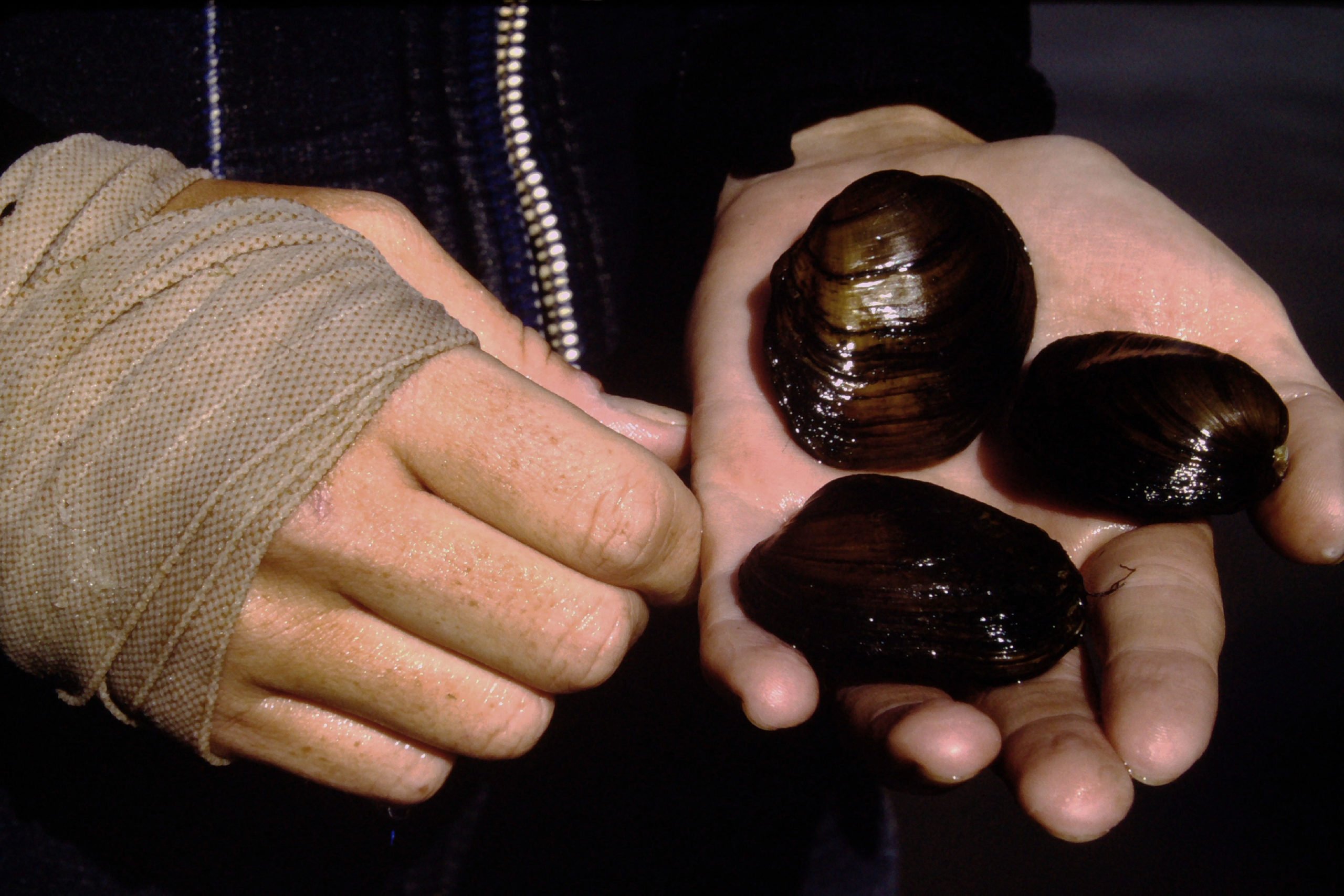
Kathy Johnson holding mussels (Photo Credit: Greg Lashbrook/PolkaDot Perch)
We got an email recently from one of the project’s lead researchers. He’d received an inquiry about the long-term success of the project. Unfortunately, we weren’t much help as we weren’t part of the final relocation process.
From our group communication, I gather the mussels never made it back to the Black River. Rather, they were added to an existing mussel bed or refugia in the lower St. Clair River. It’s unknown if the riffleshells survived, but I’d like to believe some did.
On a final note, using gold dredges is not acceptable by today’s research standards. This is an admittedly rough way to handle a sensitive endangered species. Today’s conservationists and researchers do retrievals by crawling through rivers and picking the mussels out by hand.
A good source for more information including maps, videos, research links, and conservation efforts can be found by visiting the Freshwater Mollusk Conservation Society.
Catch more stories from Kathy Johnson on Great Lakes Now:
I Speak for the Fish: April showers bring vernal pools and baby salamanders
Turtle Recovery: Studying turtles on the Kalamazoo River 10 years after Enbridge oil spill
API key not valid. Please pass a valid API key.Featured image: Sorting mussels (Photo Credit: Greg Lashbrook/PolkaDot Perch)


